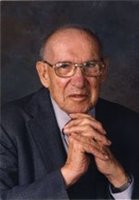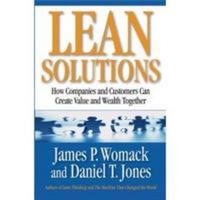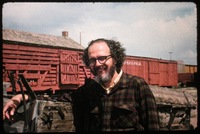Posts selected fromManagement Blog - Engineering Blog - Investing Blog and other blogs - Managing Innovation
You manage processes such as thinking up a new way to use computer technology differently than you manage a process to manufacture tires. But the idea that you don't manage and improve the process just because the process seems discontinuous is a mistake. continue reading: Managing Innovation - Management Pioneer Peter Drucker 1909 – 2005

The present people in organizations are still stuck in the 19th-century model of the organization. When big business first emerged throughout the industrial world around 1870, it did not emerge out of the small businesses of 1850 — it emerged independently. The only model available, the most successful organization of the 19th century, was the Prussian Army…
The Prussians succeeded because they had created an organization. They were the first ones to use modern technology effectively, which in those days meant railroad and telegraph. Business copied the command and control structure of the Prussian army, in which rank equaled authority. We are now evolving toward structures in which rank means responsibility but not authority. And in which your job is not to command but to persuade.
continue reading: Management Pioneer Peter Drucker 1909 – 2005 - Government Lean Six Sigma
Once the political decision has been made to eradicate polio then that desire can be carried out – and politics really has little impact. Other examples are not as simple. A political decision to eliminate AIDS runs into political controversies in selecting the best strategies to accomplish the goal.
A desire to eliminate hunger, poverty or homelessness run into differing opinions on how those problems should be addressed. I can’t imagine any politician against the elimination of those problems. However, many politicians will be against various tactics to accomplish those goals.
Political decisions have management components but arguing about the poor management effectiveness of political decisions is a bit too advanced for our current capability, I believe. It seems silly for a government to subsidize mansions being built in hazardous areas where insurers would not insure construction, but for political reasons it continues. It seems silly to have the political leadership prohibit the government from negotiating lower drug costs from suppliers, but they do. continue reading: Government Lean Six Sigma - Interview with Jim Womack (2005)

The whole idea of lean solutions is to start with today’s customer in today’s circumstances and ask what the customer really wants. When we do this, the first thing to note is that manufactured goods have gotten vastly better, somewhat cheaper
...
But we have also noticed for years the growing gap between the factory, where things are getting better, and the situation of providers and consumers where it often appears that things are getting worse.
continue reading: Interview with Jim Womack (2005) - Be Thankful for Lean Thinking
Through better information engineering, supply chain improvements have resulted in a reduced bullwhip effect, lower inventory levels, reduced logistics costs, and streamlined payments. These improvements appear to have helped produce macroeconomic benefits such as more stable economic output and higher productivity growth.
continue reading: Be Thankful for Lean Thinking - Lean Information Technology
It is very easy for waste to be hidden in IT. I think it is more difficult to notice the inefficiencies in IT because much of the work is done in virtual space, not real space. I think that can make it more difficult to see the waste.
...
Instead of taking the time to design these properly something is created quickly, for today. If the code had a physical existence I think much of it would look like a rube Goldberg contraption. continue reading: Lean Information Technology - Appreciation for Bill Hunter
 I frequently receive kind words from people who knew my father. A recent note:
I just thought I’d let you know how much I enjoyed your dad’s class as a grad student in 1979 at UW-Madison. I’m sure you’ve heard many comments like this, but I’ll add one more. He was a delightful and entertaining prof who clearly loved his subject. He made an impression on me one day by asking us a question about the British comedy radio program, The Goon Show, which I had heard. I think I was the only member of the class who raised his hand. After that moment, I always felt a special bond with him, because I thought it was great that he appreciated the wacky humor of that show.
I received a wonderful education at UW and your dad was no small part of it.
continue reading: Appreciation for Bill Hunter - Manufacturing and the Economy (2005)
The conventional wisdom was that the rest of the world would not be able to compete with the United States for high wage, high value jobs. It turns out the rest of the world is much more able to compete for that work than was expected.
...
I think we often talk as though manufacturing in the United States is not feasible. Yes, things are changing, and have been for several decades. But the United States is still the largest manufacturer in the world.
It is true (in my belief – and based on the statistics above and in the graphs) that the United States has been decreasing manufacturing employment. And it is also true other countries – notably: China, Korea and Mexico are increasing manufacturing output. However, I believe the there has been no increase (in fact I believe their has been a decrease) in manufacturing jobs worldwide.
[in future posts I was able to find data that showed in fact China, while manufacturing output was booming, actually lost more manufacturing jobs than the USA did: Manufacturing Employment Data: USA, Japan, Germany, UK… 1990-2009, Manufacturing Job Losses: USA 2 million, China 15 million from 1995-2002, Global Manufacturing Employment Data – 1979 to 2007, Manufacturing Jobs Data: USA and China, ] continue reading: Manufacturing and the Economy (2005) - Management Training Program
So I said to the Toyota executive, “You’ve only got two or three suppliers per category, and you never take bids. How do you know you aren’t being ripped off?” So this guy, who was around 60, gives me an incredibly frosty look and says, “Because I know everything.” Everything? “That’s my job,” he says.
Reading “Because I know everything” brings to mind an arrogant blowhard to many in America (I think). Probably because most who would say that, are arrogant blowhards. But when someone has worked (a Toyota executive or a baker) for 40+ years in the same area those words can have quite a different meaning than a 31 year old MBA working in his third industry. Managing with constancy of purpose and long term thinking can make a big difference. continue reading: Management Training Program - New Business Ideas Take Time
- Going Beyond (or away from) Lean Thinking?
“Lean,” as it is commonly implemented, is not enough.
I believe ideas from Deming that are missing from many lean efforts would be helpful (Toyota applies Deming’s ideas to a much greater extent than those modifying Toyota’s practices for their organization).
Mainly what is needed is for organizaitons to more deeply impliment lean thinking. There is not a need to "go beyond" lean - the problem is poor implimentation not good implimentation of a management philosophy that has been overtaken by some new management ideas that were missing. continue reading: Going Beyond (or away from) Lean Thinking? - Deming’s Ideas at Markey’s Audio Visual
Mark Miller, General Manager, Markey’s Audio Visual spoke on Markey’s experience adopting Deming’s ideas.
- Markey’s needs to anticipate the changing needs of customers and anticipate those needs
- Unknown and unknowable – not really unknown just un-measurable (again taught to all employees)
- Gemba – where the real work gets done (the customer interaction – he stressed time and again that the key to their success was Markey’s employees interaction with customers – Markey’s aims to provide the best customer experience the customer has with any company)
- Break down barriers between departments – Markeys doesn’t charge internally. Indianapolis looses money – they own the high end equipment used by the other offices.
- Intrinsic motivation v. Extrinsic motivation – he has the chart from page 122 of New Economics in Deming’s handwriting on his wall.
continue reading: Deming’s Ideas at Markey’s Audio Visual - Why Fix the Escalator?
I think we all (including me) have to be careful when we make judgments of those we respect or find wanting. It seems our judgments often have more to do with our opinion of the person or company, than the specific behavior we believe we are judging. At times this is wise, I believe, but you should remember the basis for your opinion. continue reading: Why Fix the Escalator? - Marketing in a Lean Company
- Eliminating Complexity from Work
as much as half of the activities of about sixty people had been to set up and take down jobs, expedite, move material, count material, and do other tasks that were unnecessary in the new process.
Tim Fuller's article discusses how much inneficiency was removed from the process by adopting single piece flow in 1985. How long did it take for management practice to understand this? Certainly this understanding wasn't widespred in 2005. I am not even sure it if it is widely understood and systems have been designed or redesigned with this knowledge in 2017. continue reading: Eliminating Complexity from Work
|